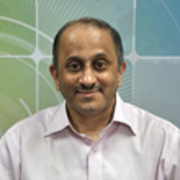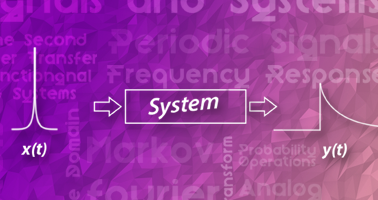MOOCs provide perspectives from teachers around the world

Vikram M. Gadre, IIT Bombay
Electrical Engineering
Aug, 2018 (II) By Dr. Veenita Shah
Professor Vikram M. Gadre from IIT Bombay has herein shared some of his views on MOOCs, and his experience with it. He has mentored several offerings of the MOOC named Signals and Systems, offered through IITBombayX. Prof. Gadre found MOOCs to be a rewarding and learning experience. “It is a wonderful way of reaching out to the masses. One of the things that I learnt was to organize material into small modules for a large audience, who are not in front of you. Though there are interactions with students in blended mode of learning, you need to cater to students, who may want to learn at their own pace, or want to learn only a part of your offering. Thus, we need to create modules, which are well-connected to each other, easily processed, and yet keep the content self-contained,” he told.
MOOCs differs from a traditional teaching-learning practice in many aspects. In this context, Prof. Gadre shares, “For most of the course duration in MOOCs, there is no face-to-face interaction between the students and the instructor. However, there is communication through discussion forums, emails or social networks. In classrooms, an instructor can afford to reflect on his teachings, or modulate the pace of the class; while in MOOCs the instructor focuses on delivering the right content in an appropriately sized-module. Thus, the flexibilities available in the classroom are somewhat reduced in MOOCs; however, there are video editing flexibilities in MOOCs that are not available in a classroom.”
“Blended offerings, with the face-to-face interactions, makes a world of difference in the way that a student connects to the course.”
Reflecting on the functionality of MOOCs, Prof. Gadre stated that one of the most important benefits of MOOCs is the ability to use more than one medium. “The camera allows you to record different kinds of video data, in addition to your own delivery. These may include different kinds of presentations, simulations, graphics or discussions,” he shared. Prof. Gadre advises that these affordances should be appropriately exploited by the MOOC instructors. “We also incorporated some of these features, but probably didn’t use its powers to the fullest. My course required a lot of derivations, which was facilitated well by the set-up where I could write my derivations live. The MOOCs also allows assignments of different kinds catering to large audience effectively. The data from these MOOCs can also be used for pedagogical studies, to improve future MOOC design,” he told.
Different modes of deliveries are known to have their own advantages and disadvantages. The schedule of offering is fixed in an instructor-paced mode, while the self-paced mode provides flexibility to learners to perform course activities at their own convenience. Prof. Gadre remarks, “In an instructor-paced model, an instructor can anticipate the time period during which the students perform course activities, which allows him to orchestrate learning to an extent. However, the instructor-paced mode becomes rigid in timings for the students. Self-paced mode of learning, though provides time flexibility to learners, also makes the offering a little static. The content needs to be uploaded in the beginning of the course, and nothing much can be modified after that. Blended offerings, with the face-to-face interactions, makes a world of difference in the way that a student connects to the course.” Prof. Gadre also stated that for such interactions to be possible, all facilities, equipment, and set-up needs to be well in place. “Coordinating the timings of students for interaction, and also cooperation of students to attend such interactions is important that came in our way once in a while,” he shared.
“Extended peer-interaction is still a challenge in MOOCs, which we look forward to resolve in the future with expanded technology.“
Online learning is being considered as an important component in the growth of education in the world. Prof. Gadre added, “In my opinion, online learning supplements the face-to-face interactions in education, and does not entirely substitute classroom learning. For education to reach out to the masses, and provide perspectives from teachers around the world, online learning is the best way forward. The dynamism in MOOCs allows you to offer different content to different audiences. It allows the students to learn at their own pace. It also provides a platform to instructors to put together long-term resources such as an e-book.”
Prof. Gadre also feels that there are some unresolved challenges associated with MOOCs. He mentioned “Though there are strong attempts for personalization in MOOCs, learners can’t interact with the instructor whenever they wish. Also, in my course “Signals and Systems”, it becomes difficult to examine the derivational or analytical understanding of the sequence of steps, which leads to a conclusion. In such cases, the setting of questions is very complicated, which poses a challenge in designing assignments and assessment. In MOOCs, the context of peer-learning is being used to a great advantage, particularly through discussion forums. However, extended peer-interaction is still a challenge in MOOCs, which we look forward to resolve in the future with expanded technology.” He thus believes that MOOCs must not be considered as an alternative to traditional classroom teaching, but a strong support to education in today’s digital world.
Encouraging learners towards MOOCs is important to make the most of this vital online resource. Prof. Gadre feels that it is important to demonstrate to the students, the gains achieved from MOOCs. “The opportunity to learn from some of the best instructors, and the gained learning resources are some of the intrinsic benefits of MOOCs. Many educational institutions are incorporating credits for students completing the MOOCs. Moreover, recognition of certified MOOCs by different industries and institutions, which would potentially grant opportunities for learners’ growth, would automatically encourage them to take up and complete a MOOC,” he added.
Prof. Gadre concluded by acknowledging the support received during his ongoing journey of MOOCs. “IITBombayX has been a very important component in the successful delivery of MOOCs. I had the privilege of working with a very dynamic, young, enthusiastic and cooperative recording team, who worked closely with me, and advised to make the course delivery more effective. I would also like to acknowledge my teaching associates, with an efficient leader named Ashwith Rego, who made sure that the course was up to the mark. Thus, the potential obstacles during the course were overcome by the support of these teams.”




